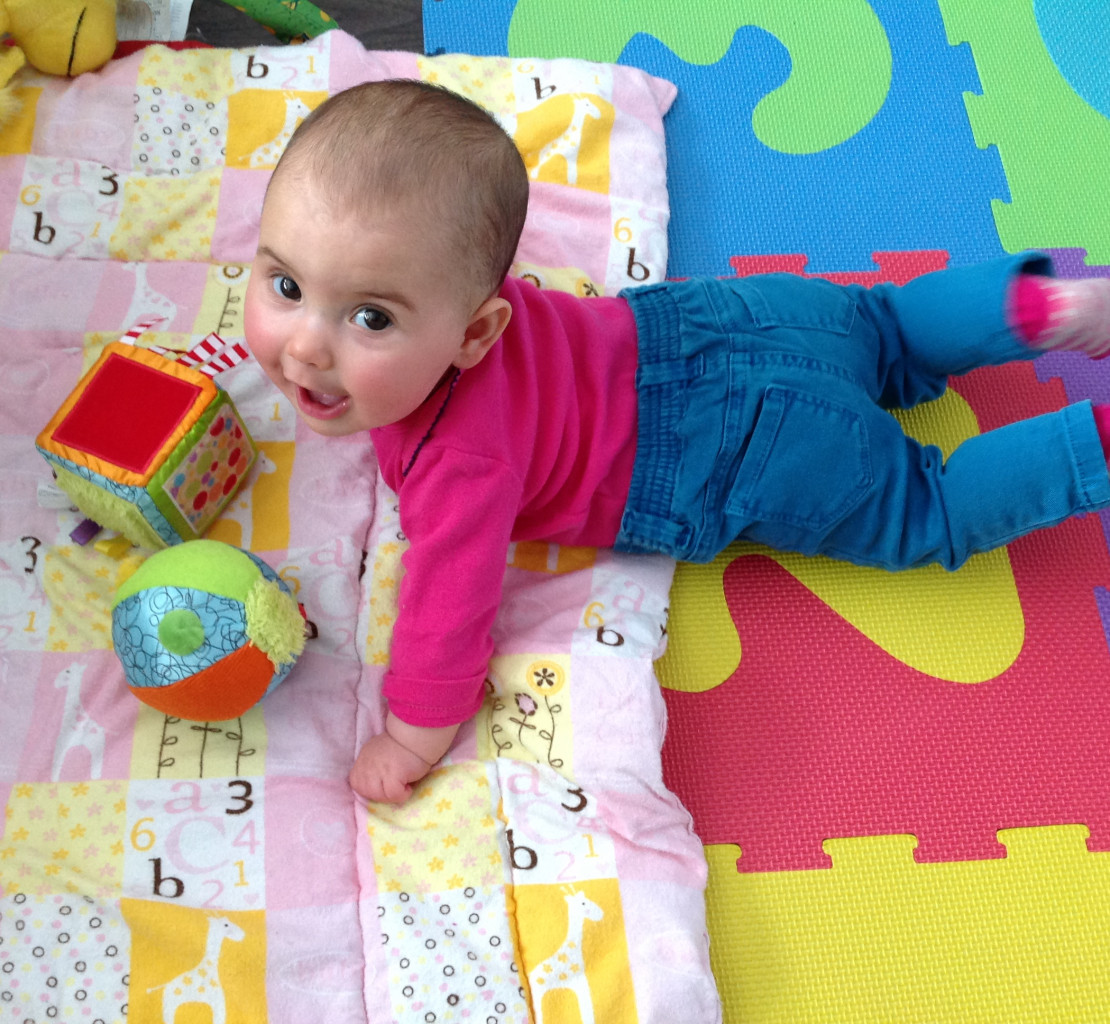What is Tummy Time? Why Should my Baby do it?
Updated October 31st, 2023

As a new parent you probably have heard about putting your baby on her back for every nap and sleep. What you might not have heard, is that you also need to put your baby on her tummy everyday while she is awake. This prevents your baby from developing a flat spot on her head (also known as plagiocephaly).
The soft spots on your baby’s head
- Your baby’s skull is made up of many bones that protect and support the brain. At birth these bones are not joined together firmly. This allows baby’s head to change shape so it can pass through the birth canal.
- Babies are born with “soft spots” (called fontanelles) on their heads to allow for rapid growth of their brains and skulls.
- Your baby will have two main fontanelles:
- One on back of the head which generally closes by one to two months of age.
- One on the top of the head which generally closes between nine to 18 months of age.
Hot Parent Tips:
- You may be able to see your baby’s pulse when you look at the top fontanelle.
- If your baby is very dehydrated the top fontanelle will look sunken.
Why do flat spots happen?
- Because newborns neck muscles are weak and their skulls are not firmly joined yet.
- When your baby lays in one position for too long it puts pressure on his bones which cause the flat spot. This can happen if they sleep for long periods in one position. If they are left on their backs for a long period, or in car seats.
- This can also start before the baby is born from the way he is positioned inside your uterus.
What can I do to prevent flat spots?

When your baby is awake:
- Give her supervised tummy time every day for two to three minutes at a time. Many babies will not like “tummy time” at first, but as they grow stronger they will enjoy it. You can start this the first day you get home from the hospital.
- Make it fun by getting on the floor and playing at their level.
- Put a toy or mirror in front of him.
- As your baby gets used on being on her tummy, do it a bit longer each day. Don’t be afraid to do it a few times a day.
- You can try lying on your back with baby on your chest facing you; this encourages him to lift his head to look at you.
Position changes throughout the day:
- Try holding your baby or wear your baby rather than putting them in a carrier seat. This allows baby to be close to you and look around.
- Try putting your baby in a side lying position when playing on the floor with him. You can put a rolled towel behind his back to prop him up. Be sure to change sides and supervise.
- Alternate which hip you use to carry your baby. This encourages looking, turning and balancing.
When your baby is asleep:
- Always put him to sleep on his back. Your baby will naturally turn his head towards you, so alternate the direction your baby lies in the crib. This will encourage him to turn his head in different directions and avoid resting in the same position all the time.
Tummy time helps
- Your baby develop head control and strengthen his upper body. This prepares him for pushing up onto his hands and knees which leads to rolling and crawling. This leads to more exploring and learning!
What if my baby doesn’t like tummy time?

- Make sure he is not hungry or tired before you start.
- Try laying your baby on your chest.
- Keep your baby company by getting down to his level and talk to him.
How will I know if my baby has a flat spot?
- You may be able to see it.
- If you notice your baby always looks in one direction, check to see if a flat spot is forming.
- Your health care provider will check during your baby’s regularly scheduled appointments.
- If you are concerned ask your public health nurse or health care provider to assess your baby’s head and neck.
What can I do if my baby has a flat spot?
Not all flat spots can be prevented. Most can be. If your health care provider notices a flat spot he/she will check the muscles in your baby’s neck. If needed your baby may be referred to physiotherapy.
Reference:
Caring for Kids- Preventing Flat Heads in Babies who sleep on their Backs